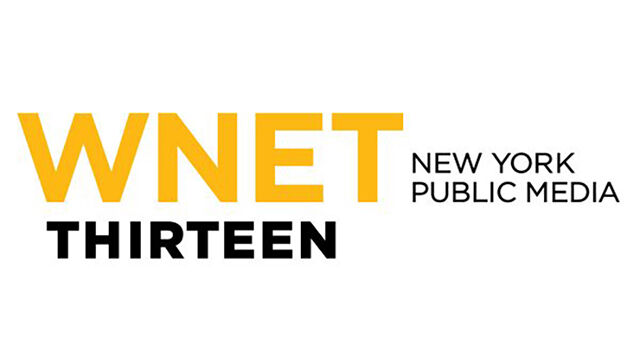Q&A with WNET’s New Senior Director for Digital Fundraising, Todd Whitley

Q&A with WNET’s New Senior Director for Digital Fundraising, Todd Whitley

In the spring of 2018, Todd Whitley joined the WNET team as the first Senior Director for Digital Fundraising. Todd has spent more than two decades in the online fundraising and digital marketing space, 16 years of which were for public health organizations such as the American Lung Association and The Leukemia & Lymphoma Society.
Todd is on the faculty of the Strategic Communications program at Columbia University – where he’s been an instructor or advisor for Digital Media & Analytics and the program’s Capstone class. And last year, he authored a digital fundraising workbook for The Nonprofit Technology Network (NTEN). The guide was designed to help any organization craft, implement, and refine their digital fundraising strategy.
As the digital fundraising lead for WNET in New York City, Todd oversees fundraising initiatives online and develops digital solutions for three stations, including THIRTEEN. We sat down with him for a Q-and-A about his career and specific ways member stations can engage audiences. (This interview has been condensed and lightly edited for clarity.)
Thanks so much for your time, Todd. Before we start, how did you first get into the world of digital fundraising?
It began in 1995, when I was hired to write the content for American Lung Association’s website. It was really the dawn of the internet for nonprofits. I had been ghostwriting for Fodor’s Travel Publications at Random House and working as a freelance editor and writer. When the American Lung Association website launched, they turned around and asked me to oversee the website. At the time I had absolutely no experience. I wasn’t really into the Internet, but I accepted the offer and that really opened up an area of interest for me that expanded greatly.
Those really were the earliest days of the Internet.
Yes, I had the benefit of being there at the very beginning and growing with the Internet. I’m indebted to the American Lung Association for encouraging my development. In my role, I was able to observe how communications could influence folks online. I saw how online communities could really serve one another. Then I started to see how evolving technologies and behavioral changes were influencing the medium, so from 2004 to 2008, I went back to school, in the Strategic Communications program at Columbia [University]. I thought their program would help me professionalize how I could manage an online program.
You then went to work for The Leukemia & Lymphoma Society. By this time, nonprofits had gone from experimenting with online fundraising in the 1990s to becoming almost entirely dependent on it. What was that like?
It was very intense at The Leukemia & Lymphoma Society because nearly one third of their total revenue came in online—over $100 million—so it was a totally different game from the American Lung Association, where the money I raised online was considered “new revenue.” The rigor that needed to be applied to testing and development, coupled with the speed required for an organization that was always marketing/always fundraising, was just at another level entirely. But I was fortunate to be able to apply the same strategic principles I had developed through Columbia and found them really relevant and workable. Those experiences had a really big impact on me. Raising a lot of money while also serving the mission of those organizations online was something I was particularly proud of being able to do.
After that, you returned to teaching and consulting before finally landing at WNET. What is one of the biggest differences you discovered between your previous nonprofit clients and public television?
Perhaps the most obvious is the fact that there’s all of this amazing content at PBS. That is an unusual resource in a nonprofit organization. There are people here who are experts at developing this content, and to me, that’s a wonderful asset.
What challenges have you noticed?
One of my initial observations is that there’s less of a focus on thinking strategically about how all this content works together—about positioning it on different platforms. That’s one of the challenges in front of me.
Strategic thinking is a theme that runs through your career and features prominently in your digital fundraising workbook. Why is it so crucial to digital fundraising?
Having a strategy—a plan that’s measurable and supported through tactics—allows you to be thoughtful and decisive. There are so many things you can do online. A strategy helps you focus on the most important things. Above all, digital fundraising is very donor-centric. That’s a wonderful thing for an organization to embrace.
Can you expand on that thought? What makes digital fundraising so donor-centric?
At the highest level, digital fundraising allows us to think differently. For instance, many nonprofits focus on the user experience of their donors — to me that’s limiting. I like to consider every constituent a prospective donor and they may be something even more wonderful, an influencer in promoting the cause. Online, it’s not just what you can give, it’s who you may influence in your network – it’s the potential that our constituents have in educating their networks that make our relationship with them uniquely donor-centric.
If you start to think of all the things that we are as an organization through this lens, you uncover that you may be doing things that are actually working against our goals.
Can you provide a specific example of that? How can an organization end up working against its own goals?
One organization I consulted for was a massive foundation associated with a large health network. On a superficial level, you thought they were slick and had seemingly unlimited resources. They said all the right things about digital. But when I peeked under the hood, I found out that the foundation had six different departments. All six had their own email marketing platforms. They shared contact information with the [parent] corporation, which had another 12 departments, and each of those departments had their own email marketing platform. But none of those departments reconciled the email preferences of their subscribers.
So imagine you were a grateful patient who ended up making a donation to this organization. It’s likely you would have then found yourself receiving this mix of multiple communications from the organization. The organization didn’t seem to fully understand who you were or what your relationship was to them. Given the volume, it probably seemed insensitive to [that relationship]. When you start thinking digitally, you start to uncover these things. The good news is, they’re not un-addressable.
Earlier you mentioned the speed of evolving technologies and online behavior. Are we at a point where stations should expect even an older audience demographic to be digitally savvy?
Yes. Today, people in their 60s and 70s are much more savvy. They’re certainly already on Facebook and savvy enough to pick up on [email preferences]. We need to meet their expectations and deliver the best experience we can. In terms of digital messaging—unlike in direct mail or any other print medium—you have the very accessible opportunity to elevate your dialog with these constituents in a way that is impractical and unaffordable with direct mail. It just requires honing your strategy and putting some thought into message development. But it’s absolutely the best opportunity.
I now you’ve only been on the job for a few months, but what does a focus on user experience look like at WNET?
There’s a big focus on email here. Of course, digital is more than email. But if we’re going to focus on email, the ability for our constituents to manage their preferences is really important. For WNET, I’m very happy I was able to push ahead an updated privacy policy that’s being vetted by the Better Business Bureau.
Why is that so important?
Because your privacy policy, in the context of the Better Business Bureau’s standards, is a transparent reflection of how we manage data and how our users can manage their preferences. When a formal document like that is in place, it becomes a check and balance on your business practice. It ensures that you’re thinking of your constituents first. That has a really great impact in terms of donor trust and your ability to expand your online community.
Then you dovetail that with permission-marketing best practices. It’s a privilege for us to send emails out to people. It’s not an entitlement. The right thinking is to present options to your constituents, to make sure they’ve opted into them and that you’re delivering value in what you’re sending out. It can’t just be about meeting your needs as an organization. You also need to be serving their needs.
We’ve talked a lot about email, but there’s much more to digital strategy beyond email. Could you talk more about the larger picture?
That’s something I’ve always liked to encourage about digital—that digital isn’t just email. Digital is a number of different channels: your website, your email program, your social media program. How you rank in search is very important. How you rank in referral sites like Wikipedia, Charity Navigator or Network for Good is important. [Digital] is comprehensive in scope. It can sometimes be hard keeping up with that, but even a cursory approach at improving your presence in those different channels can have a good outcome.
One very underutilized resource, I believe, is the Google Ad Grant [free in-kind AdWords advertising for nonprofits]. This is something every station (as an independent 501c3) can take advantage of in the system. It’s not going to be a panacea for your search rankings, but it’s definitely something that’s there for any size station to take advantage of.
Can you talk more about the need for stations to develop a comprehensive strategy beyond “we should try doing some Facebook ads”?
There are so many [available] tactics online, it’s easy to find yourself in a reactive mode. It’s easy to slap up an ad or issue an email, but the only way you’ll ever know if you’re getting anywhere with it is through a strategy—tactics that are measured and evaluated and adjusted as you go. Strategy gives you a sense of control and power over your program. Instead of feeling overwhelmed by the requests that come in, the strategy allows you to be empowered by what you’re doing online, knowing that you’re moving ahead, based on evidence, because you’re seeing a measurable result.
We’re entering a season where stations are developing strategies for fundraising around year-end giving. What would be your advice to them?
I would say, use the workbook as a guide. Year-end campaigns are ideal scenarios because there’s a lot you can do if you think ahead. With a little thought and an integrated approach, you’ll see a nice return. So…what are you doing in direct mail? What are you doing on air? What are you doing in email? How is your messaging building on the relationship you’ve established with your constituents? Can you pull a plan together that appreciates everyone’s experience through this campaign? Sprinkle that with a cultivation appeal, then add something interactive for them to do. You can raise more money and deepen your relationship with your constituents online through thoughtful messaging waged uniquely across platforms and turn your fundraising campaign into a welcoming experience for your constituents.
